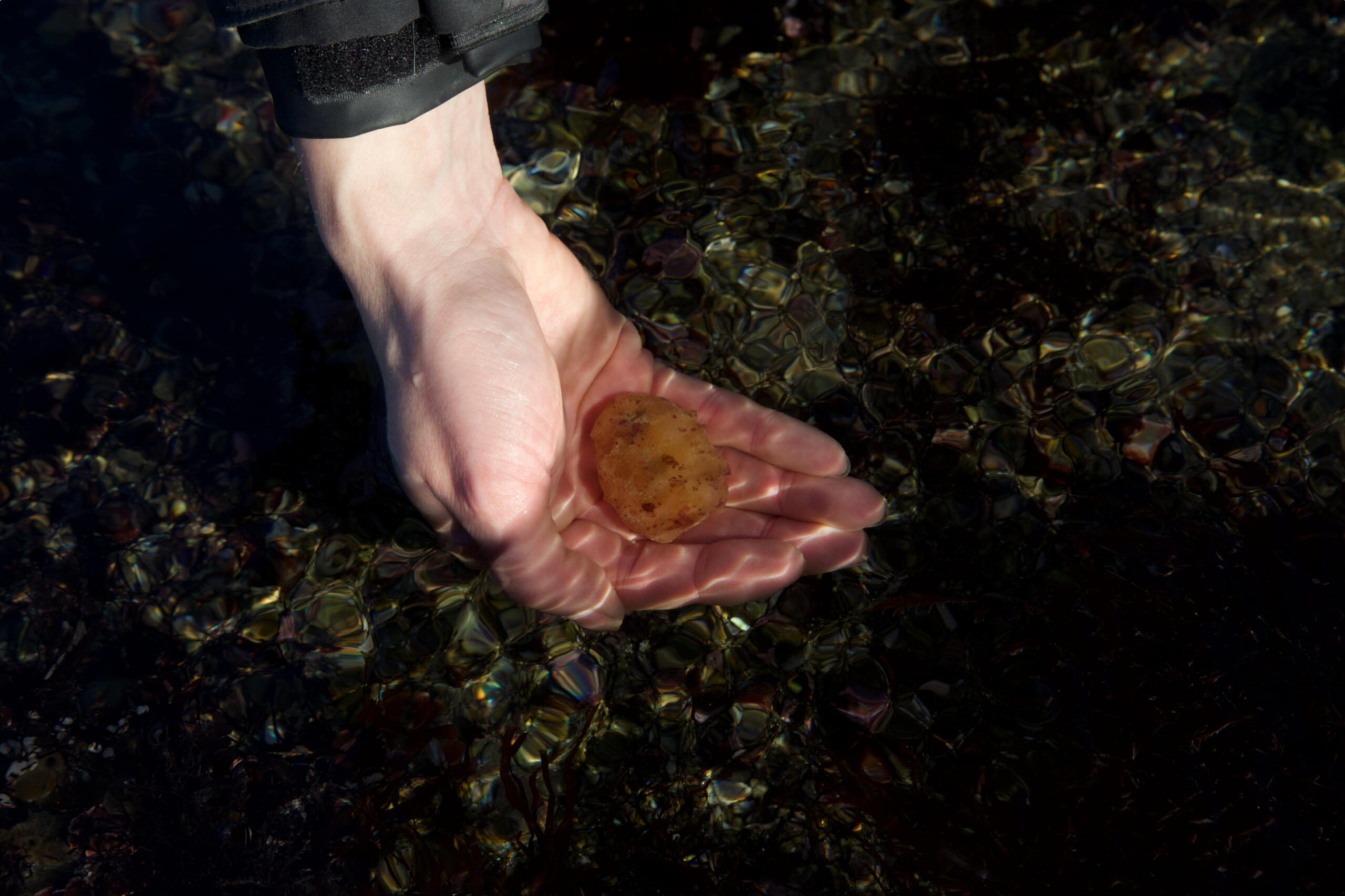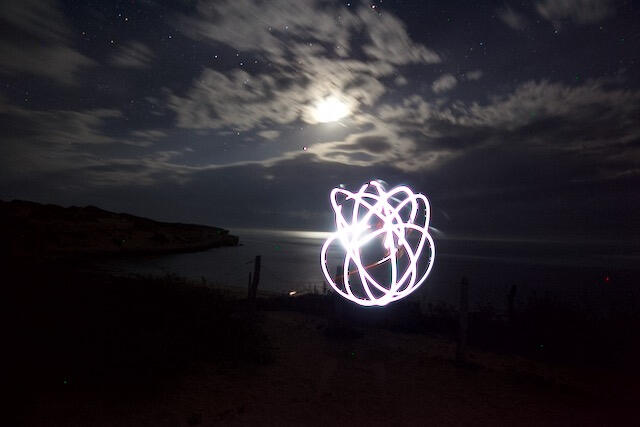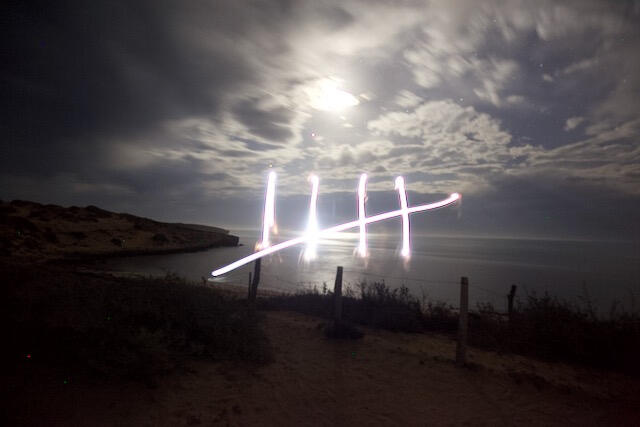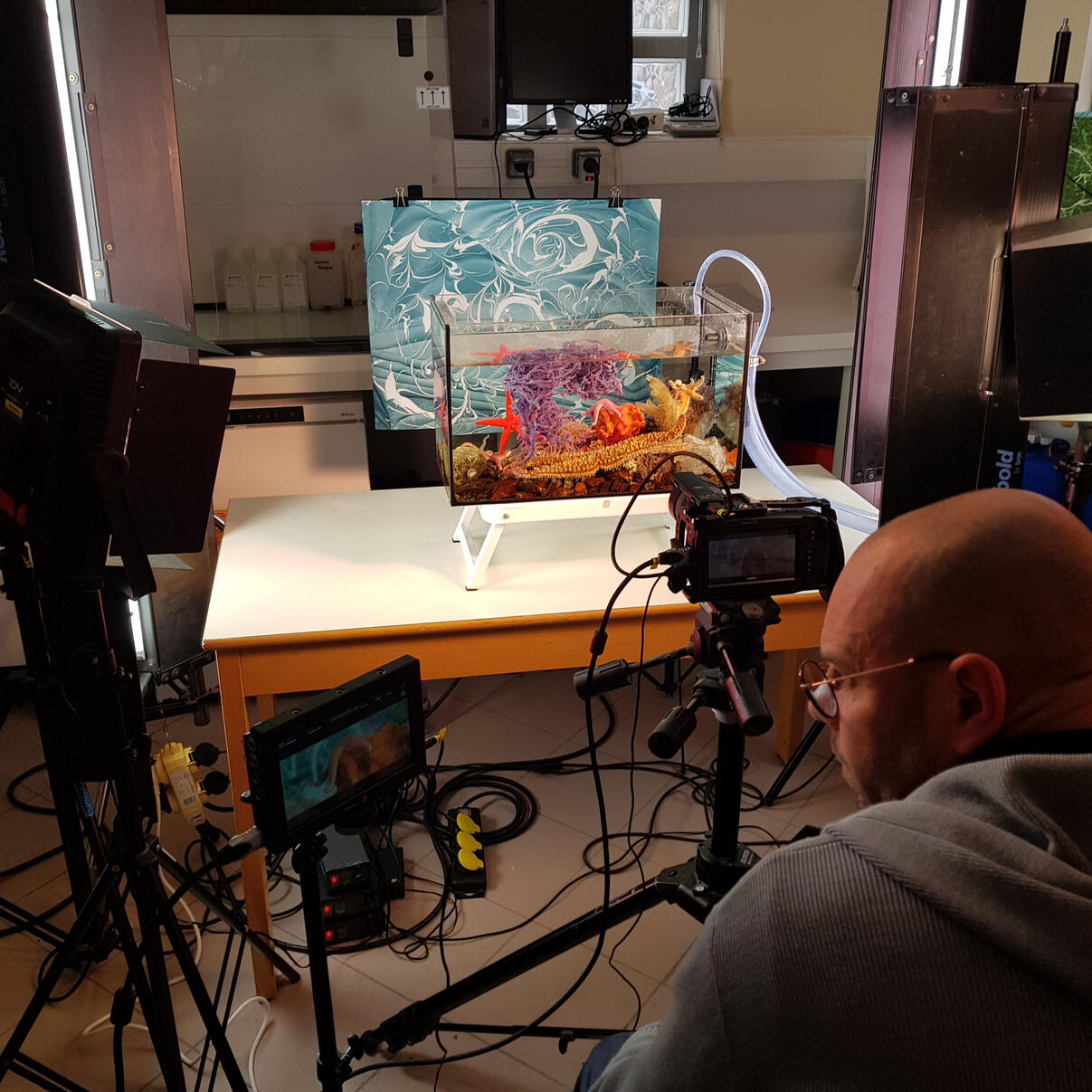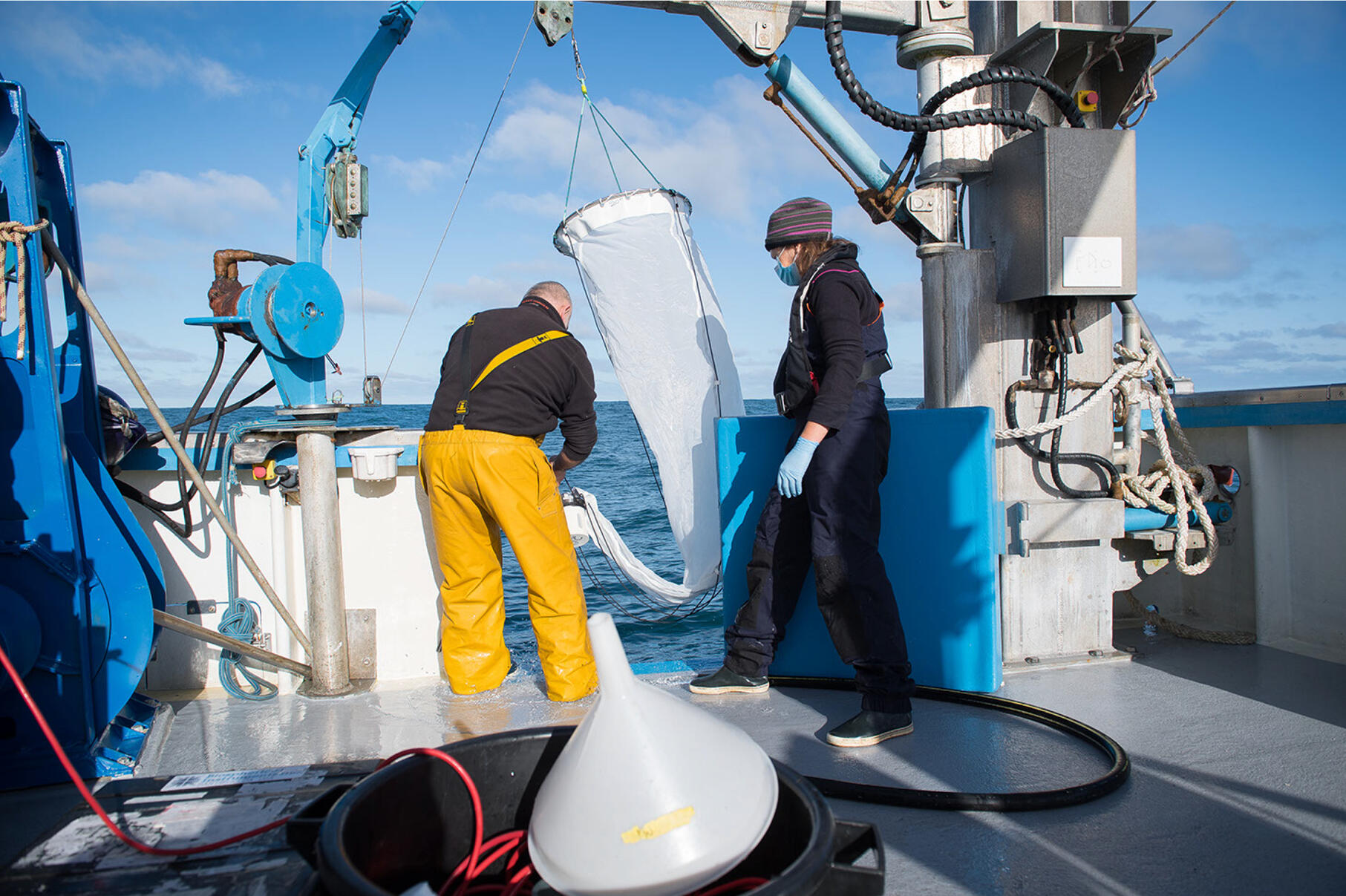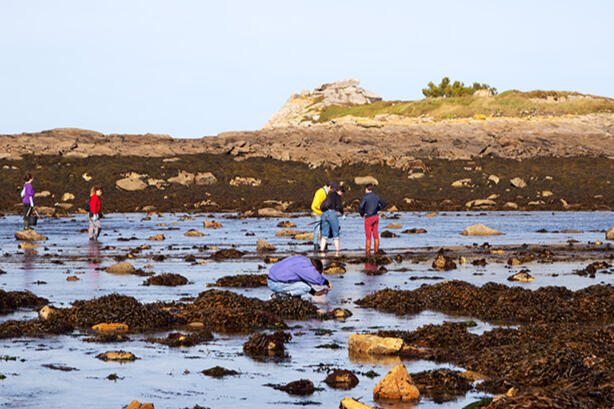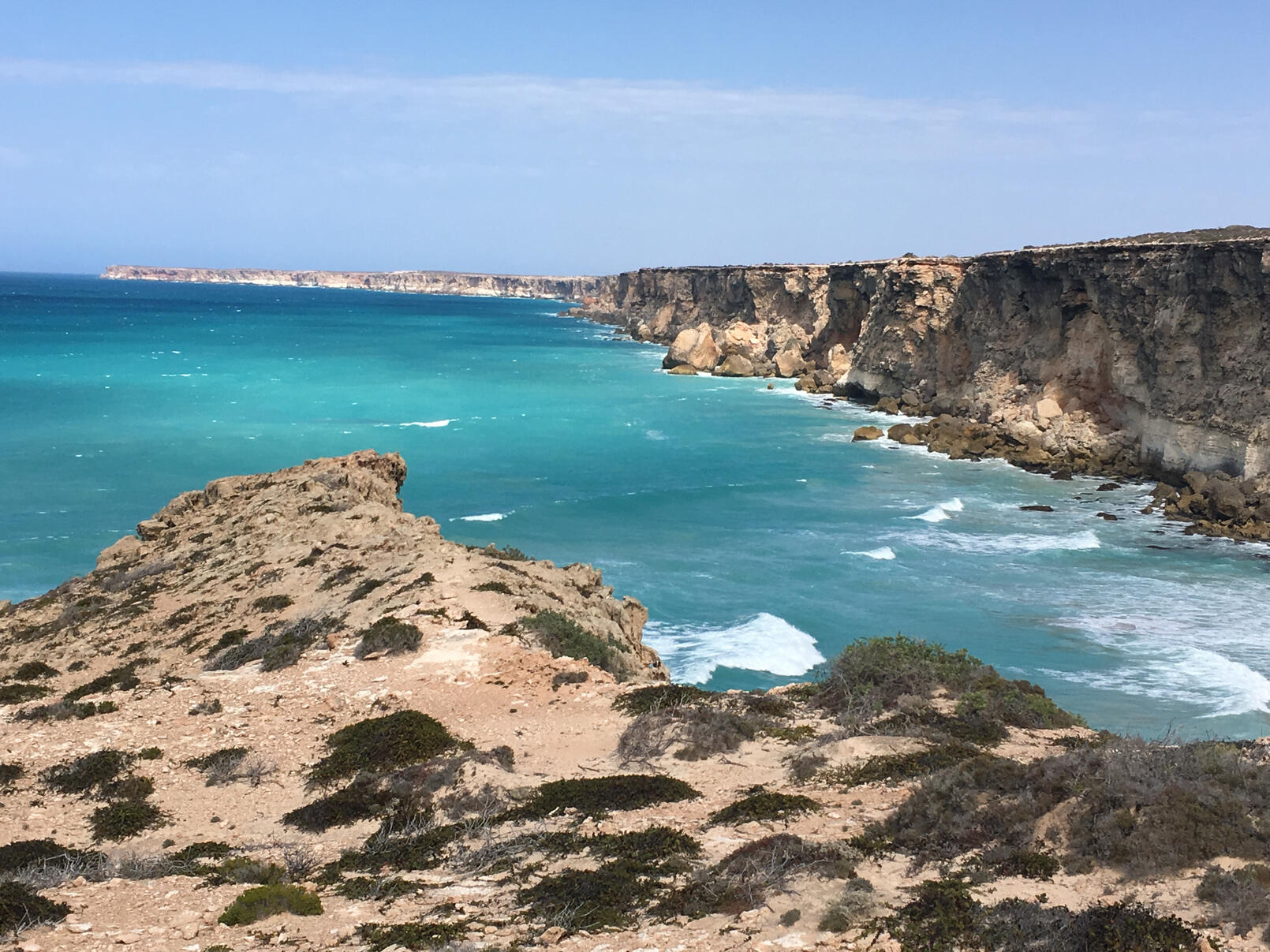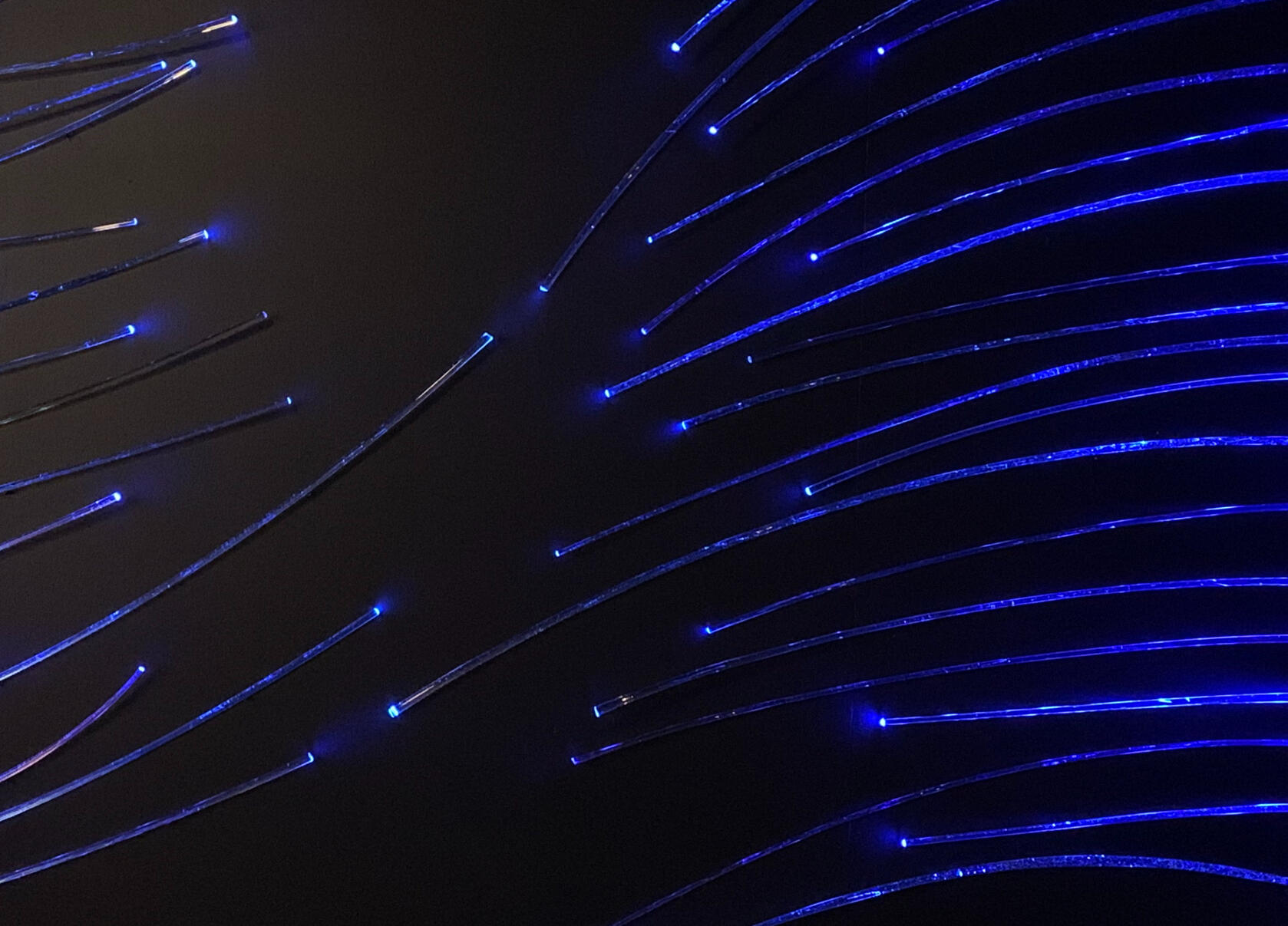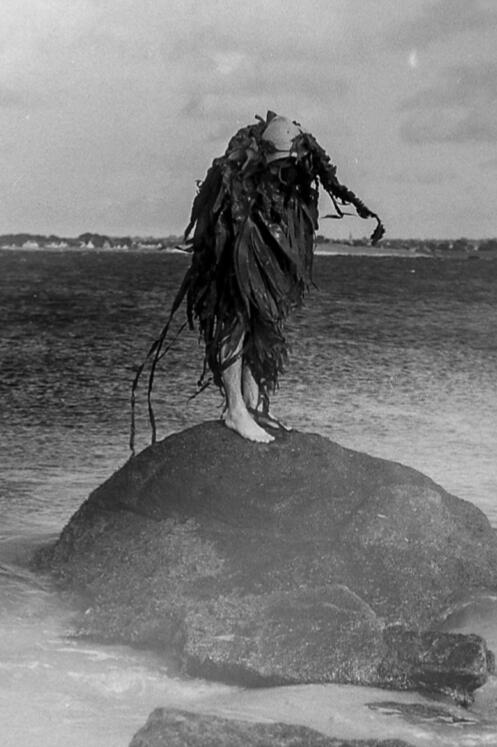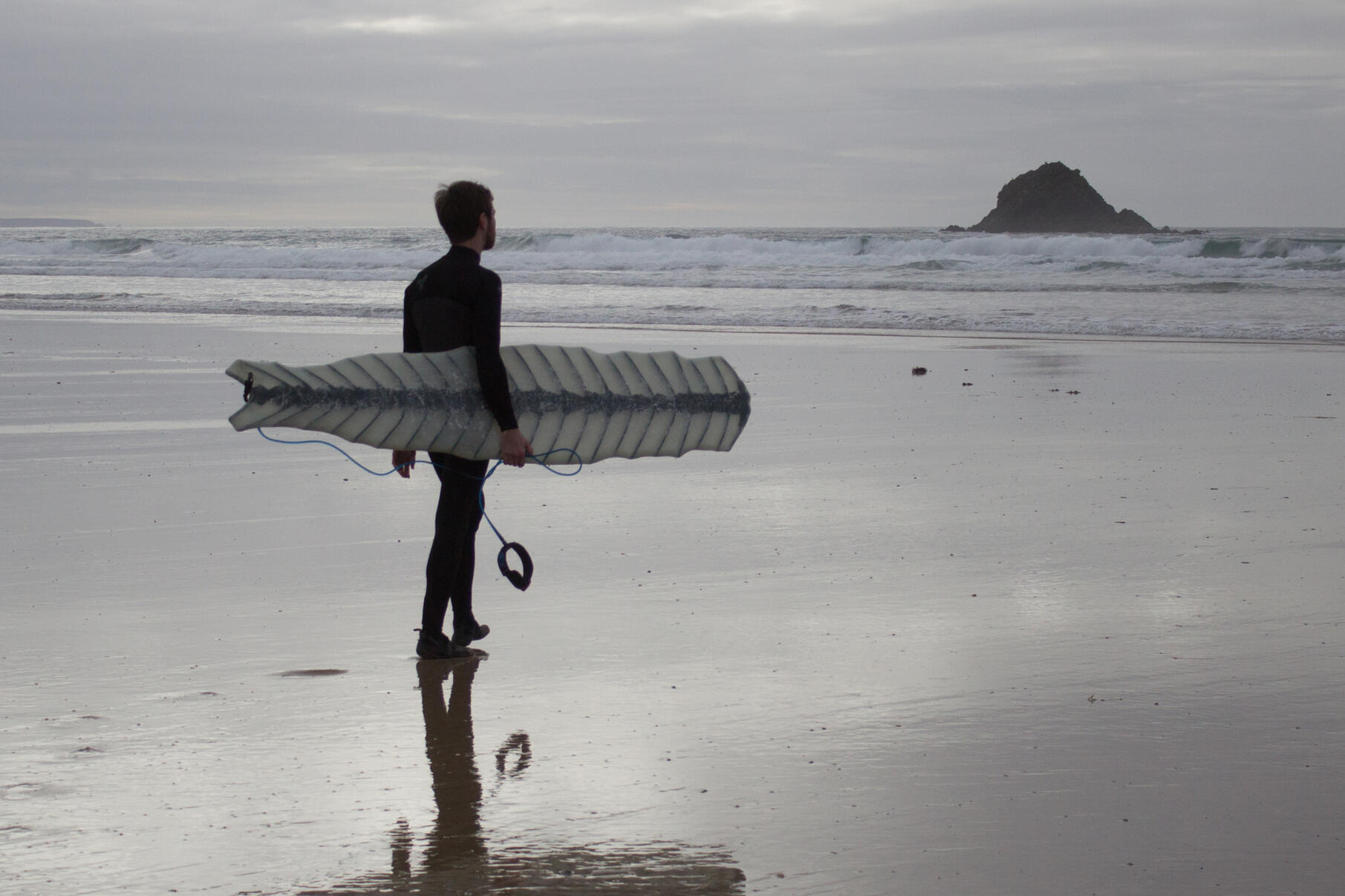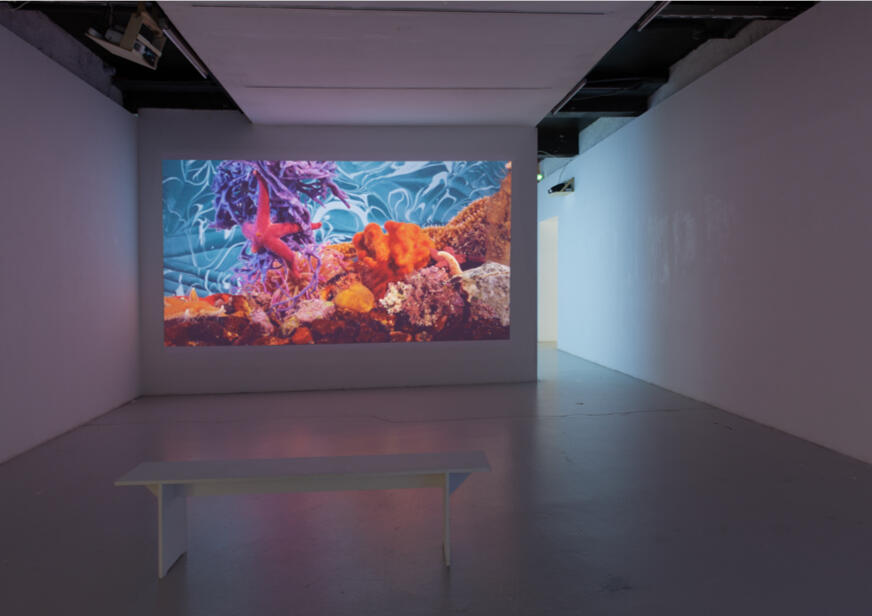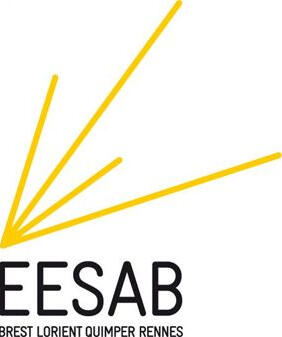Current
Current is an exhibition of creative responses to research that explores the multifaceted biodiversity, phenomena, histories, energy and current states of the Ocean and coastlines of Australia and France.Presented at the Museum of Discovery in Adelaide SA from May 15 to June 30, 2023 and curated by Lara Merrington, the exhibition includes the work of French artists Edgar Flauw, Merovée Dubois and Benjamin Rivière. Each of whom have active research projects being undertaken along the Atlantic coast of Brittany and who work respectively in film, performance, and object design. The Australian artists Gabriella Bisetto, Chris Boha and Peter Walker present work in glass, collage, and sculpture.
Field Notes
A selection of sketches, images and process development work during research phases.
Process images for Ludarista series.
Images: Edgar Flauwe
WORDS
"Current Translations"
- words by Lara MerringtonCurrent is an exhibition of creative responses to research that explores the multifaceted biodiversity, phenomena, histories, energy and current states of the oceans and coastlines of Australia and France. In February 2019, a Partnership Agreement was created between the University of South Australia (UniSA) and the European Academy of Art in Brittany (EESAB), France, to foster joint education and research activities. This partnership enables research collaborations with
academics and graduates of both schools, to explore the demand for constrained natural and human resources; fragile and threatened ecosystems; commodified cultural resources; and significant, unpredictable, and extreme climatic changes through creative works in art, craft, and design.Through different methods of interpreting scientific data in response to their primary source of research, the ocean, the works in Current interrogate the idea that art and perspective can play an important part in advancing environmental knowledge and awareness. Whilst not a new concept, as scientists deliver a ‘final warning’ on the climate crisis [1], it is one that needs reiterating.Merovèe Duboìs presents a black and white film photograph, Homme Algue (Photo: Malo Legrand), 2019. The work is the result of the artists participation in the research program "Underwater timeline” in which looked at specific aspects of maritime heritage simultaneously visible and hidden, depending on the tides rhythm. In this project, artist focused on a different period or on a significant aspect of archaeological practices in collaboration with scientists. By using the tools of observation, walking, meeting, harvesting, learning, and listening, Dubois makes what he calls “research-creations.” During a journey to Stagadon Island (France) in September 2021, Dubois collected three varieties of seaweed on the beaches at low tide, which he then wore on his body to wander and explore the coastline. After an hour,
the weed naturally apart to give way to his clothes.The black and white film photograph resonates with anthropological photography and documentation of the “real”, or of landscapes in the 1920 twenties. This image is the only residue or evidence of this strange half-human and half-vegetal moment in time; of costume, camouflage, coat, or a skin, or, as the artist says “the impossibility of metamorphosis.”Gabriella Bisetto has long been interested in exploring connections of the human body and the environment around us. Transference, 2023, is a large work panning the entire width of the back wall of the space and is constructed from clear, pulled glass canes and LED lighting.The work began with an interest into energetic qualities and rare moments of visibility in the Ocean, and in the body. Initially underpinned by research into the bioluminescence of the human body (a side effect of metabolic reactions/energy)the idea that energy could be seen visually, albeit with highly specialised equipment, had Bisetto think about recent articles citing the possibility that the global ocean conveyor belt [2] could be slowing down due to the increase of fresh water into the ocean from melting ice caps. This disruption to the oceans normal functioning has the potential to have significant impacts on us all. Transference is an interpretation of not just this spectacular natural phenomenon, but the natural world and how our human actions affect and in turn are affected by environmental shifts. It aims to capture the beauty of this invisible energy and the way it connects us all globally.Dr. Chris Boha came as an immigrant to Australia, having moved from Canada in 2009. Subsequently his work often focuses on identity, immigration, and material notions of home. In this series of layered collage works, Boha finds the similarities rather than differences when comparing the two coast lines in question, Great Britannia, and the Great Australian Bight. Images of single use plastics, ironic politics, fires, floods, and dystopian futures flirt with elements of the uncanny. Our shared uncertain futures are expressed through a visual communication free of the need of linguistic translation. Believing creativity is the essence of
asking questions, the artist demonstrates how narrative, and imagination can be used to evaluate, explore and interpret our existence. Could some seriously imaginative ideas guide our way out way out this multifaceted mess? Can our “dire futures be treated with fantastical hope”? The works, Eugene’s Ark, Houseboat and Mobile Home are each accompanied by their own tongue in cheek narrative. They suggest that this environmental emergency, now recognised across any country, language and culture, and our current situation is so unbelievable that perhaps, the artist suggests; we need to treat ridiculousness with ridiculousness.Edgard Flauw completed a Master’s Degree in Transition Design. With a focus on mimicry and biomimetic-led thinking, Flauwe’s practice crosses over contemporary art, design, and architecture, with surf culture as a core interest. The Ludarista series started in 2015, with the shape of a fish. This inspiration may seem
rather obvious if you think of the shape of a surfboard, but the result is not so obvious. Gradually building up an archive of x-rays of common fish in Brittany, France, the work Carrelet is a large-scale reproduction from the archive. These x-rays are used to create the structure of the surfboard he has in mind, to which he then applies a layer of fiberglass and resin, allowing the material to coat the skeleton. Once the board is finished, its hydrodynamics are random and made to be navigated in the waves. Ultimately, it is the sea itself that informs the shape of the object designed to glide upon it. The appearance of these surfboards, resembling ancient fossils, is primitive and savage, which Riviere says “takes us back to their ‘raison d'être’ that they are made to play in
the waves.”Peter Walker’s background in the craft and design of furniture and surfboards have led him to many places in his practice and the world. This latest artistic response to the environment borders land and sea, with these delicate objects expressing a fascinating and cautionary tale. Fire Blooms, 2023, refer to a natural phenomenon of algal and phytoplankton blooms that occur in the Southern Ocean. Smoke and gases from bush fires on the Australian mainland
have been observed drifting thousands of kilometres across the Southern Ocean where the falling nutrients fertilize the water and encourage blooms. Phytoplankton blooms absorb excess carbon dioxide released by the fires and provide the most fundamental element of the food chain for all marine animals.
With a practice that usually favours collecting large fallen pieces of tree in the Australian bush, Walker presents something smaller than usual. Made of small sections of Eucalyptus, fire and paint, the three carefully crafted abstract objects become fractal-like creatures reflecting Walker’s research. Observing that the occurrence of red tides associated with algal blooms were becoming more frequent and longer lasting, Fire Blooms responds to the inter-
connectedness of natural systems and highlights the remarkable ability of organisms to adapt and even flourish in changing climatic conditions.Benjamin Rivière’s video work Aquariums, 2021-2022 was shot in the research aquarium of Roscoff Biological Station, France. In this almost surrealist film of pure art vs science, the camera’s lens becomes a tool of meticulous observation. Image by image, in real time, forms and colours build an underwater architecture, appearing as if a strange underwater bestiary. The only manipulation used for these shots reside in the use of painted backgrounds that
provide a stage to amplify the patterns, textures, colours and movements of the species filmed. Rivière works to reveal and amplify the marvellous, the unexpected, the beauty, the strangeness and the fantasy of a world and phenomena under water, and often invisible to the naked eye.The exhibition Current, at the Museum of Discovery in Adelaide, is the first time the research and work produced across the two partnership Universities and their associated projects comes together in one location. Artworks shown in this exhibition are results of artistic research processes. Although vastly different sites in terms of distance, there is a multitude of fascinating similarities in the artists approaches, outcomes, and discoveries.In a poem by French poet Charles Baudelaire L’homme et La Mer (Man and the Sea) there is a verse describing ‘the waves of the sea as a mirror for the soul’. In this sense, Current invites us to reflect upon the human / nature relationship, to see human nature’s capacity to be both destructive and calm and gives thought to how we might gently invite an idea of the Symbiocene.[2]Across the divide, in Australia, one of the most ancient cultures in the world understands this well. The Mirning are the First Nations
Peoples of the ancient coastal seabed region of the Nullarbor Plain, Ngargangooridri, and their name, Mirning, means to “listen, learn, observe and understand for wisdom and knowledge” [3] This, is living in direct correlation with the Country they care for and that in return, cares for them.The message not lost in any language, is that a great global listening is needed, now. A translation between human and nature, art and science, care and commodity; not versus. Observing and interpreting our surrounds is our great teacher, a fact both artists and researchers have always known. Through performative practice, master craftwork, design and documentary, the artists in Current playfully and insightfully interpret this present world of
environmental turmoil. They ask us to question and to uncover the multifaceted power, strangeness, and beauty of not just our oceans, but our human connection to the natural world around us.
1.https://www.theguardian.com/environment/2023/mar/20/ipcc-climate-crisis-report-delivers-final-warning-on-15c
2. The Global Ocean Conveyor Belt is a term coined by geo chemist Wallace Broecker to describe the movement of water around the world. https://www.jstor.org/stable/43924572
3. https://www.ocean-space.org/exhibitions/s-fattal-p-halilaj-a-urbano-thus-waves-come-in-pairs
4. https://mirning.org/
ARTISTS
Gabriella Bisetto is a Senior lecturer at UniSA Creative, University of South Australia and a practicing glass artist. Drawing on her abiding interest in the body as a source of conflicted narratives, Gabriella’s work measures, translates and interprets the mechanisms, forms and ideologies of the human body and its connection to the world around us through blown glass, hot sculpting and team projects.
As an artist Gabriella has been an invited speaker at the multi-disciplinary conference ‘Take a Deep Breath’ at the Tate Modern, London, awarded the Australia Council Rome Residency to explore the nexus between science, religion and art, and awarded the nationally competitive Tom Malone Prize for her glasswork ‘becoming’. As a lecturer Gabriella’s pedagogical innovation and commitment to teaching has been recognized through a 2017 Australian University National Teaching Award.Dr Christopher Boha has taught at a variety of schools including the Alberta College of Art and Design, The Chinese Academy of Art and the University of South Australia. In 2003, Christopher graduated from the Alberta College of Art and Design with a Bachelor of fine art where he specialised in glass and sculpture. In 2017 He completed a Doctor of Philosophy at the University of South Australia, where his thesis topic was‘There is no place like Home/s: An investigation into immigration, belonging and the hand-made object’. Since his immigration to Australia in 2009 Christopher has exhibited widely across Australia as well as exhibiting internationally, including the prestigious Arte Laguna Prize in Venice Italy. His work is held in a number of collections around the world. Currently Christopher is working on a series of work that blends digitally manipulated, printed and layered imagery with found objects and printed and textured glass. This work explores ideas around climate change through imagined dystopian narratives that drawing on elements of the uncanny and the fantastical.Merovee Dubois graduated in 2022 in Rennes. He was involved in the research program called "Underwater timeline" whose purpose was to highlight the specific maritime heritage being shown and hidden at the same time depending on the tides rhythm. Each artist, graduate or student from EESAB focused on a different period or on a significant aspect of archaeological practices, in collaboration with the scientists.
"I have made it a habit to work outside the workshop and go and explore other territories that become the subject of my research-creations. Observation walking meeting harvesting learning listening are recurrent and necessary practices in the creative process. In each of my projects. I work by "agentivity" on these territories at varying scales in different temporalities; with my gestures actions and interventions that respond to the issues I want to discuss and share. I then invite myself in the local practices the stories and the History of landscapes or the Folklore which make up the different places I invest. This sensitive immersion reinforces the childish and naive nostalgia of discovery. I then respond to these chatty territories - despite their stone silences - with regard to both material and immaterial materials that I solicit through my plastic sound and perforated proposals."Edgar Flauwe is an artist and designer. He graduated in 2015 in Brest from the Master Degree "Transition Design" where the local context lies at the heart of the process. Mimicry and biomimetism were "leading thinking". His personal research is largely based on the maritime world, while exploring it from the particular focus on the culture of water sports. Indeed sliding means finding a balance between oneself the object and the environment, this balance being constantly questioned by a moving element.
Edgar Flauw develops a protean practice dealing with contemporary art, design, and architecture notions. Surfboards and surf culture are the starting point of his approach which is self building and enriching by a trial and error process. For him, the doing experience and in situ testing are goals and new perspectives of evolutions at the same time. Because it is a question of giving materiality to the project make it real and living, Edgar used to improve his knowledge in a maker and DIY philosophy. Associated to a curious and open minded approach for the others and general knowledge, he deploys his competences with enthusiasm and versatility for making solutions for wave riding objects, patrimonial questions or public spaces problematic. In these various interests, he used to work alone, in duo or in larger groups. The visionary boards made by Edgar Flauw represent a break with the tyranny of technique. To rediscover the primitive spirit of the surfboard and to go on playing with the wavesPeter Walker is Program Director, Master of Design, UniSA Creative. Prior to this Peter was Associate Professor at the Rhode Island School of Design, USA from 2001 to 2011, serving as Graduate Program Director for the Department of Furniture Design and Department Head.Peter gained an MFA Degree from the School of Art, University of Tasmania in 1993. He ran his own studio for 14 years in Tasmania, moving to Adelaide to Head the Furniture Design Studio at the JamFactory Craft and Design Centre in the late 90’s. Peter was a founding member of the Designer Makers Tasmania Cooperative 1985 and Co-Director of the 1991 Hobart Design Triennial. His work is represented in public and private collections, including the Australian Parliament House Permanent Art Collection and the RISD Museum. Peter exhibits work regularly across Australia and USA, maintaining an active balance between studio practice and teaching.Benjamin Rivière is a visual artist, teacher and researcher at EESAB-Quimper
For the last 2 years he managed a research project called "Les Eaux Composées" that dealt with the history and evolution of scientific representations applied to the observation of maritime biodiversity. His artistic approach is based on collecting, manipulating and cutting out signs and symbols putting them to set up images, writing films and assembling forms.
Contact
European Academy of Art in Brittany (EESAB) is a higher education Art School comprising four campuses in Brittany and with over 900 students is the largest Art School in France. The University of South Australia Creative (UniSA) brings together disciplines of art, design, architecture, planning, journalism, communication, film and television, communication and media.For more information contact:
Peter.Walker[at]unisa.edu.au
isabelle.kaiser [at]eesab.fr
Thank you to Daniele Yvergniaux, EESAB CEO; Isabelle Kaiser, EESAB International and Research Project Manager and Peter Walker, Program Director, Master of Design, UniSA Creative for their organisation of this project and partnership. Thank you to the team at MOD. Thankyou to the artists for their research and work in the exhibition Current.
We acknowledge the lands of the Yinyila Nation of the Mirning clans, the sea, land and sky of which the artists were able to observe, document and research. We also acknowledge the traditional lands of the Kaurna people, on which the exhibition is held.
